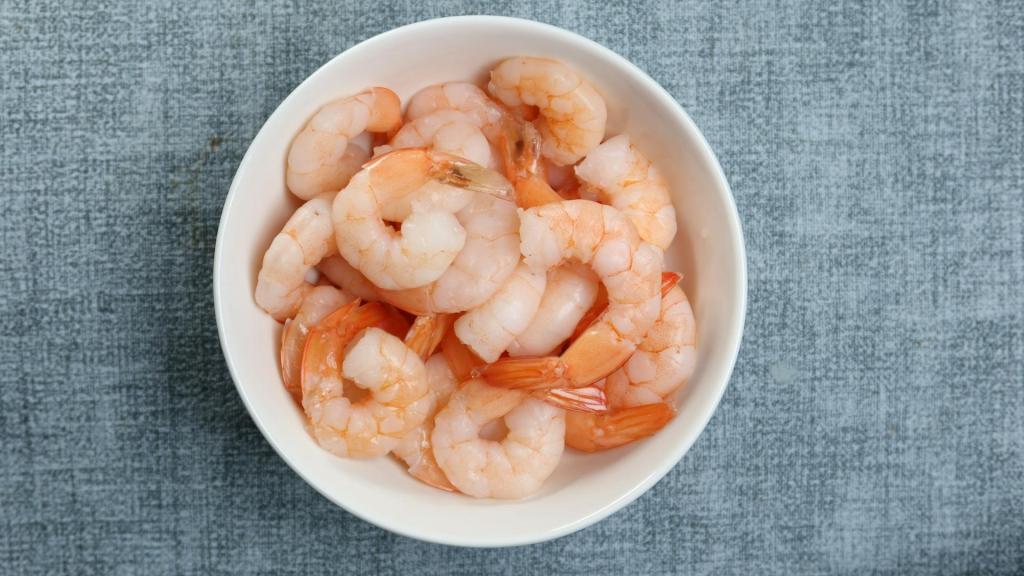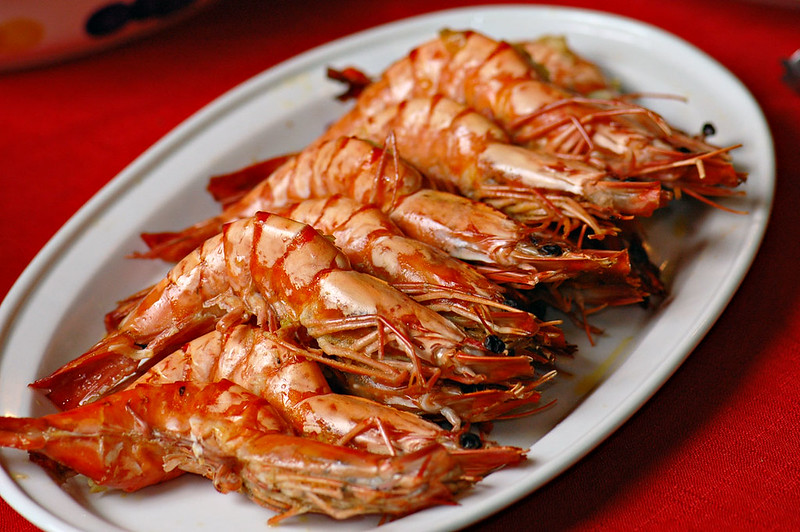Estimated reading time: 7 minutes

Shrimp and prawns are two terms often used interchangeably in the culinary world, leading to widespread confusion. Despite their similarities, they are distinct in several ways, which can influence their preparation, use in recipes, and biological classification. Both shrimp and prawns are popular seafood choices, loved for their delicate texture and sweet, succulent flavor. However, their differences are not merely linguistic but rooted in their biological makeup, habitat, and physical characteristics. Understanding these differences can enhance your appreciation for these seafood delicacies and guide your culinary decisions. First, we’ll explore the nuances between shrimp and prawns and offer some delicious recipes you can prepare with both varieties.
Distinctive Differences


Terminology
The terms “shrimp” and “prawn” are often used interchangeably, but their usage varies by region. In the United States, “shrimp” is the more common term to describe both small and large varieties of crustaceans. In contrast, “prawn” is typically used in the United Kingdom, Australia, and other Commonwealth countries to describe larger species. However, these distinctions are not consistent, and in many culinary contexts, the terms overlap, further blurring the lines between the two. Compounding the confusion, different languages and cultures have colloquial names for these creatures, leading to a global mishmash of terminology.
Biology
Biologically, they both belong to different suborders within the class Crustacea. Shrimp belong to the suborder Pleocyemata, including crabs and lobsters, while prawns are part of the suborder Dendrobranchiata. One of the key differences lies in their gill structure: shrimp have plate-like gills, whereas prawns have branching gills. Additionally, shrimp carry their eggs under their tails, while prawns release them into the water. These biological differences, though subtle, are significant enough to categorize them into different groups, even though they share many similarities in appearance.
Appearance & Habitat
They also differ in their physical characteristics and habitat preferences. Shrimp typically have a more curved body, with the second segment of their shell overlapping the first and third segments, giving them a distinct bend. Prawns, on the other hand, have straighter bodies and larger second pincers. Shrimp are usually found in saltwater environments like oceans and seas, whereas prawns can thrive in saltwater and freshwater. The difference in their natural habitats also affects their availability and the methods used to harvest them.
Size
Size is another distinguishing factor between shrimp and prawns, although it is not a hard and fast rule. Prawns are generally larger than shrimp, but there are exceptions, with some shrimp species growing to sizes comparable to prawns. The size difference is often reflected in their culinary use, with giant prawns favored for grilling and presentation in dishes where their size can be showcased. In contrast, smaller shrimp are commonly used in salads, pasta, and stir-fries.
Taste
When it comes to taste, the two are quite similar, but discerning palettes and detect subtle differences. Shrimp generally have a slightly firmer texture and a sweeter flavor, while prawns are often described as having a more delicate and slightly milder taste. Flavor differences are attributed to diet and the environment where they are harvested. However, in most recipes, the difference is subtle enough that shrimp and prawns can be used interchangeably without significantly altering the dish’s flavor profile.
Here are a few classic recipes you can prepare with both varieties.
Shrimp/Prawn Salad

Savory shrimp salad is an iconic Southern staple you can whip up quickly for a seaside lunch or even a snack you can serve at your next beach soiree. Succulent shrimp combine with a creamy mayonnaise dressing flavored with fresh herbs, mustard, celery, scallions, and zesty lemon for a perfect balance that brings out the delicate sweetness of shellfish—both shrimp and prawns. Serve on a bed of bibb lettuce, in a tortilla wrap, or alongside crackers and beer. Visit Southern Living for the recipe.
Mexican Shrimp Cocktail with Saffron

A sophisticated cultural take on the classic American shrimp cocktail, this Mexican version—coctél de camarón—is well worth the extra effort. Starting with a homemade shrimp stock featuring jumbo shrimp (or prawns) and charred vegetables prepared in a cast-iron skillet, the mixture comes together in a tart and spicy cocktail sauce. Flavored with Worcestershire sauce, adobo sauce, Mexican-style hot sauce, and serrano chile, the concoction delivers a kick that mellows out slightly when added to the stock. Ladle the mixture in large coupes or stemmed cocktail glasses, top with cilantro and avocado, and serve with saltines and Mexican beer. Visit Food & Wine for the recipe.
Authentic Italian Prawn Linguine

For a taste of Sicily, try this classic Italian Prawn Linguine. Made with fresh or frozen raw jumbo prawns (Argentinian shrimp), this delectable one-skillet dish packs an abundance of flavors, including tomatoes, garlic, red chili flakes, and lemon zest. This rendition recommends high-quality pasta, such as bronze-cut linguine made in Italy, but you can substitute it with other pasta shapes like penne, fusilli, and even spaghetti. Visit The Petite Cook for the full recipe.
Shrimp/Prawn Po’ Boy Sandwich

A Louisiana staple, the mighty Shrimp Po’ Boy Sandwich brings authentic Cajun flair to the dinner table. The secret is in the bread—so splurge on a fresh French sandwich loaf or baguette with a crispy crust but soft inside. The best versions call for fried shrimp but feel free to use grilled seafood if you prefer. Serve with a spicy remoulade made with Creole mustard, horseradish, hot sauce, and Cajun seasoning for an authentic taste of New Orleans. Visit Simply Recipes for cooking instructions and tips.
Grilled Garlic Butter Prawns

If you want to impress your guests—but without all the work—fire up the grill for this deliciously simple dish. The juicy prawns (or shrimp) are roasted on the grill and then coated in garlic lemon butter with a fiery kick of Cajun spice, chili flakes, and lemon pepper. Cooked with the shells on, the prawns stay delectably juicy in their protective barrier despite the intense heat from the grill. For an amazingly satisfying meal, you can serve this savory dish with crusty French bread and a rice or couscous side dish. Visit Simply Delicious for the recipe.
Whether choosing shrimp or prawns, each brings its own unique qualities to every dish, offering versatility and deliciousness in every bite. Plus, it’s a quintessential favorite for living the beach life.

